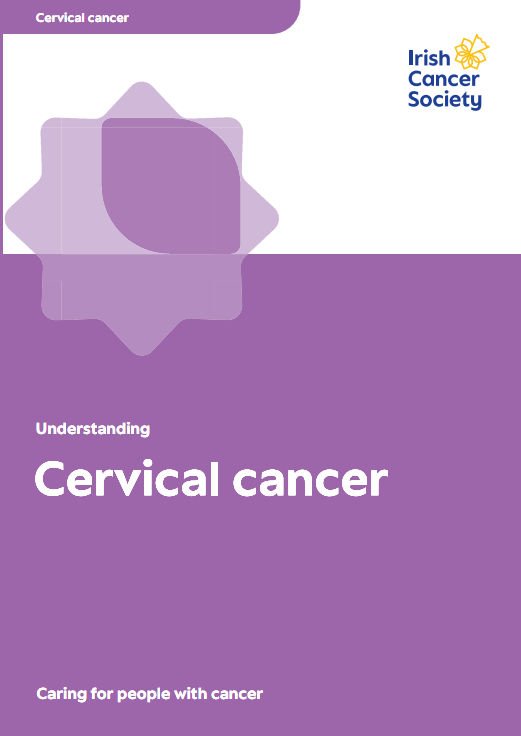Cervical cancer
About *250 women are diagnosed with cervical cancer each year in Ireland.
Signs and symptoms
Learn about the signs and symptoms of cervical cancer. You are more likely to survive cancer if you find it at an earlier stage.
Treatments
There are a number of different treatments available for cervical cancer. Your medical team will explain the best treatment options for you.
What is cervical cancer?
Cancer of the cervix is cancer of the cells lining your cervix. At first, abnormal (pre-cancerous) changes occur. These abnormal cells are called cervical intraepithelial neoplasia (CIN). These cells are not cancerous, but if left untreated, may develop into cancer.
Cancer is when the abnormal cells in the cervix form a tumour. These cells may then spread to other areas.
About 250 people are diagnosed with cervical cancer each year in Ireland.
What is the cervix and what does it do?
The cervix is found deep inside your vagina at the lower end of your uterus (womb). It is often called the neck of the uterus as it is the opening to the uterus from the vagina. It is shaped like a cone.
Usually your cervix is closed but it opens during labour to allow for birth.
The cells in your cervix are changing all the time. Most changes happen in an area called the transformation zone. Sometimes abnormal changes happen.
Types of cervical cancer
- Squamous cell carcinoma is the most common type of cervical cancer. It develops in the thin flat cells called squamous cells, which are found on the surface of your cervix and vagina.
- Cervical adenocarcinomas are less common. They develop in the gland cells that make mucus in the cervical canal.
- Adenosquamous carcinomas, mixed carcinomas, clear-cell and small-cell carcinomas are rarer forms of cervical cancer.
Recurrent cervical cancer
If the cancer returns after treatment, it is called recurrent cervical cancer. Recurrent cervical cancer may be hard to treat again. Even so, some chemotherapy treatments or targeted therapies may help. Your doctor will talk to you about your options.
Note: We use gender-inclusive language. We sometimes use woman/man and female/male when they are needed to explain a person's treatment and care - for example, talking about hormones or body parts - and when needed to describe research or statistics.
Medical content updated from our 'Understanding cervical cancer' booklet (2024). Reviewed by Dr Karen Cadoo, Consultant Cancer Geneticist and Medical Oncologist; Aidin Roberts, Gynaecological Oncology Clinical Nurse Specialist; Linda Wilson, Daffodil Centre Nurse.
Publications about cervical cancer
For more information on cervical cancer, you can also look at This is GO, which gives tailored information for people worried about cervical cancer, people diagnosed with cervical cancer and for friends and relatives. This is GO is part of the Women's Health Initiative, a research project supported by the Irish Cancer Society.
Talk to a Cancer Nurse

Support Line
Our Daffodil Centres

*The Irish Cancer Society uses the most up-to-date cancer statistics from the National Cancer Registry Ireland, available on www.ncri.ie


